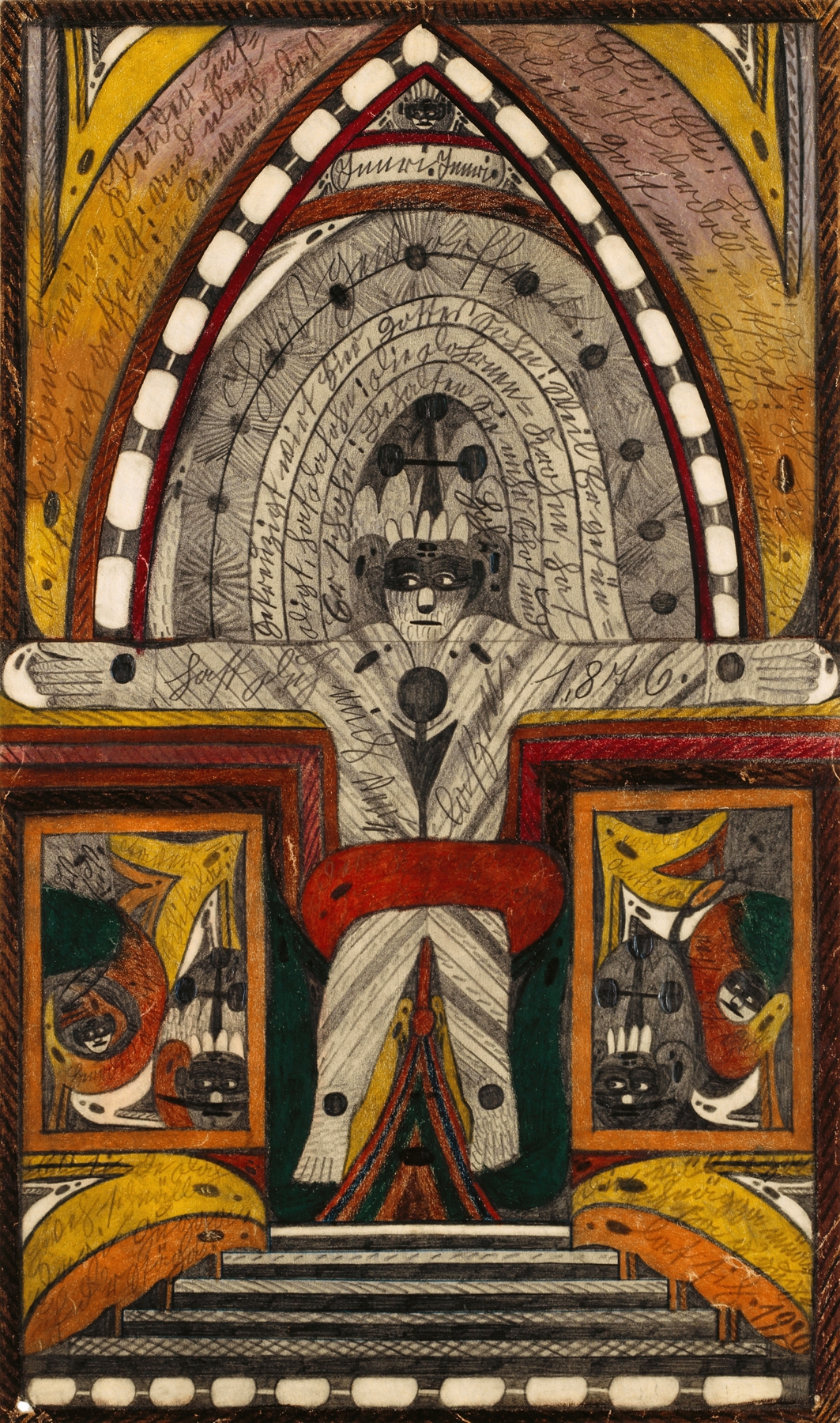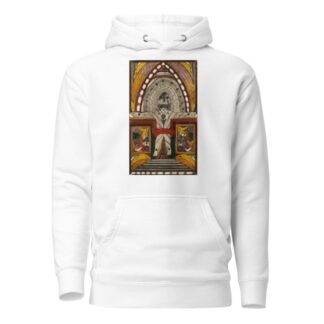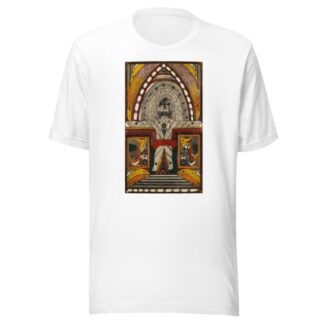Description
Die Kreuzigung meiner Wenigkeit, auf der Biskaya,=Haven=Insel, im stillen Ozean, im Späht=Sommer, 1,876 by Adolf Wölfli printed on a Sweatshirt
About the Sweatshirt
Regular fit
Standard length, the fabric easily gives into movement
Comfortable
The fabric and fit of this item are extra comfy
Tear-away tag
Easily removable tear-away tag that allows you to add a custom inside label
This Unisex Premium Sweatshirt has a classic crew neck, flattering unisex fit, and soft 100% cotton exterior.
- 100% cotton face
- 65% cotton, 35% polyester
- Charcoal Heather is 55% cotton, 45% polyester
- Fabric weight: 8.5 oz./yd.² (288.2 g/m²)
- Tightly knit 3-end fleece
- Side-seamed construction
- Self-fabric patch on the back
- Double-needle stitched rib collar, cuffs, and hem
- Tear-away label
Adolf Wölfli (1864 – 1930)
Adolf Wölfli was a Swiss artist who was one of the first artists to be associated with the Art Brut or outsider art label.
Wölfli was born in Bern. He was abused both physically and sexually as a child, and was orphaned at the age of 10. He thereafter grew up in a series of state-run foster homes. He worked as a Verdingbub (indentured child labourer) and briefly joined the army. He often attempted to perform sexual acts on young girls – often getting away unpunished.
Eventually, he was caught in the act and institutionalized for his doings. After being freed, he was re-arrested for a similar offense and in 1895 was admitted to the Waldau Clinic, a psychiatric hospital in Bern where he spent the rest of his adult life. He was very disturbed and sometimes violent on admission, leading to him being kept in isolation for his early time at hospital. He suffered from psychosis, which led to intense hallucinations.
Walter Morgenthaler, a doctor at the Waldau Clinic, took a particular interest in Wölfli’s art and his condition, later publishing Ein Geisteskranker als Künstler (A Psychiatric Patient as Artist) in 1921 which first brought Wölfli to the attention of the art world.
The images Wölfli produced were complex, intricate and intense. They worked to the very edges of the page with detailed borders. In a manifestation of Wölfli’s “horror vacui”, every empty space was filled with two small holes. Wölfli called the shapes around these holes his “birds”.
His images also incorporated an idiosyncratic musical notation. This notation seemed to start as a purely decorative affair but later developed into real composition which Wölfli would play on a paper trumpet.






Reviews
There are no reviews yet.